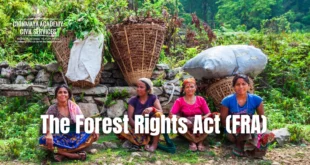Syllabus: Indian culture
Snapshot
- Today Onam is a festival only identified with Malayalis and Kerala. However it was once a big festive occassion across Tamil speaking regions as well.
- There are multiple ancient Tamil literary works that speak of grand celebrations of Onam nearly two millennia ago.
- Padmanabhan beautifully describes
- India is a land of sacred shrines, holy rivers and imposing festivals.
- Among the festivals of Kerala, Thiruonam is the most important and it is celebrated for ten days with grandeur and magnificence irrespective of caste or creed.
- The Onam festival, which falls in the first month of the Malayalam year Chingam (Tamil month of Avani) is a national festival in Kerala.
The Vamana Legend
- The origin of the festival dates back to very early times. It is believed that the festival commemorates the vanquishing of King Mahabali who was deprived of his empire by Lord Vishnu in His Vamanavathara.
- The Devas, who became zealous of the peace and prosperity which prevailed in Mahabali’s reign, prayed to Lord Vishnu to rebuff the King.
- Vishnu, in the form of a Dwarf, appeared before Mahabali and asked for a plot of ground measuring three times his foot.
- With great pleasure the philanthropic King, without knowing what the consequences would be, acceded to His request.
- Assuming a gigantic stature, Vamana measured the universe twice length-wise and breadth-wise with his foot and found no place for the third.
- Mahabali bowed down and entreated the Lord to put His foot on his own head.
- Now, Vamana who and grown into Trivikrama, placed his foot upon the King’s head and pushed him down to the nether world.
In Ancient Madurai
- The people were so grieved at the loss of their beloved King that they prayed to Lord Vishnu to allow him to visit the earth once in a year.
- Tradition has it that the visit is made on the day of Thiruonam during the month of Chingam.
- The story of Mahabali is narrated by the Tamil poet Nappoothanar in the opening lines of his work Mullaipattu in the Sangham Age.
- This incident is also referred to in Thirukkural and Silappathikaram.
- We have literary evidence to show that the Onam festival was celebrated in ancient Tamil Nadu.
- From Madurai Kanchi, one of the Sangham works in Tamil literature, it is learnt that the Onam festival was celebrated in the city of Madurai by the Pandya King, Nedunchezhiyan of Talaialankanam and its citizens more than 1,500 years ago.
- The author, Mankudi Maruthanar, gives a fine description of the festival.
- Sitting in the royal courtyard the King used to offer valuable gifts to the poets, dancers, singers and warriors of his country.
- The elephant fight was an important part of the festival those days.
Day Of Drums
- From the hyms at Thevaram of the seventh century A.D., we learn that the Onam festival is celebrated by the Saivites during the Tamil months of Aipassi in the temple of Kapaleeswarar at Mylapore (in Madras).
- According to Thirugnanasambandar, the important item of the festival is the grand feast.
- The Vaishnavite literature, Nalayira Divya Prabhandam, describes the Onam festival as a day of drums.
- Music played an important role in the festival.
Centuries ago
- Kerala formed a part of the Chera kingdom and subsequent to the long and bitter war between the Cheras and the Cholas the Kerala region separated itself from the mainstream of the Dravidian culture.
- Shut off from the rest of Tamil Nadu by the long range of the Western Ghats, Kerala has been able to preserve many old customs, ancient heritage and important festivals of Tamil Nadu.
- During the Onam festival every home in Kerala gets bright and shining in preparation for the royal visit of Mahabali.
 Chinmaya IAS Academy – Current Affairs Chinmaya IAS Academy – Current Affairs
Chinmaya IAS Academy – Current Affairs Chinmaya IAS Academy – Current Affairs



